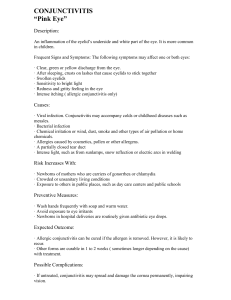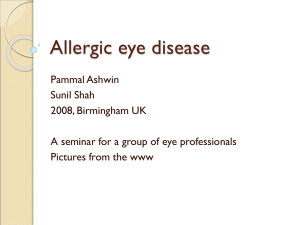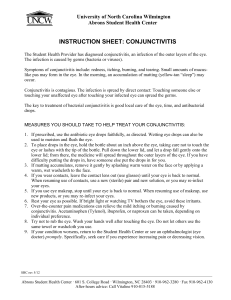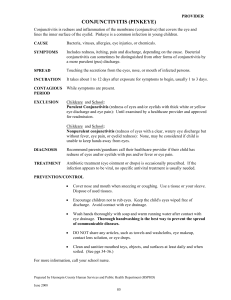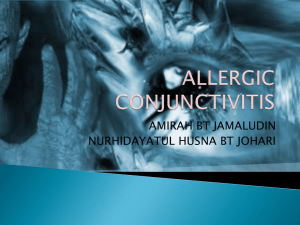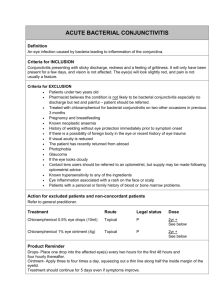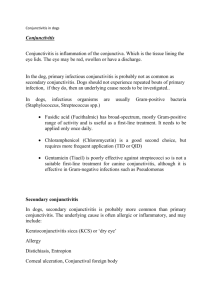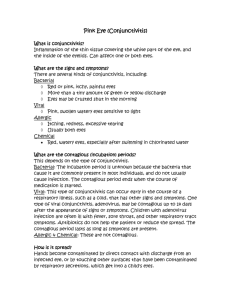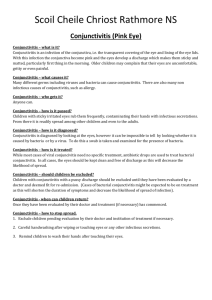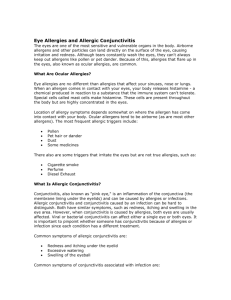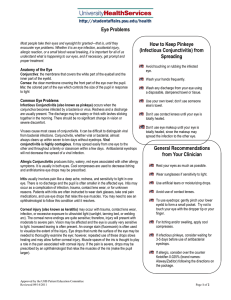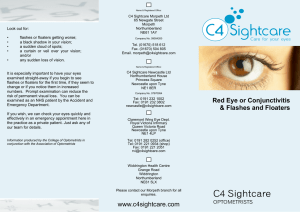CONJUNCTIVITIS BASIC INFORMATION DESCRIPTION
advertisement
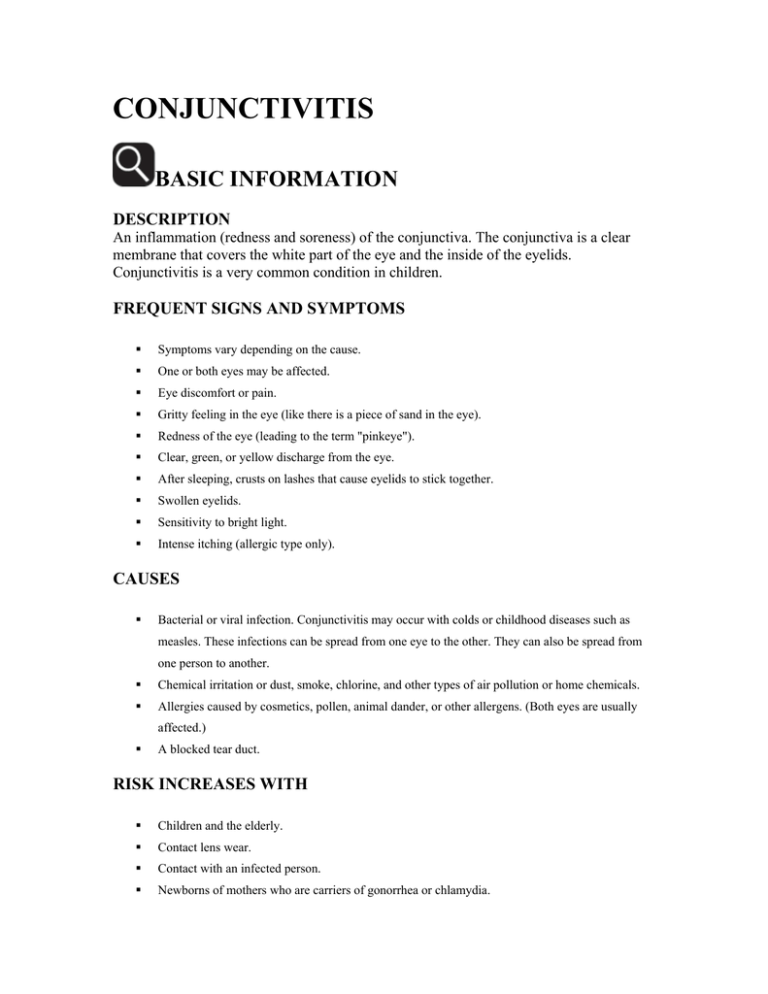
CONJUNCTIVITIS BASIC INFORMATION DESCRIPTION An inflammation (redness and soreness) of the conjunctiva. The conjunctiva is a clear membrane that covers the white part of the eye and the inside of the eyelids. Conjunctivitis is a very common condition in children. FREQUENT SIGNS AND SYMPTOMS ! Symptoms vary depending on the cause. ! One or both eyes may be affected. ! Eye discomfort or pain. ! Gritty feeling in the eye (like there is a piece of sand in the eye). ! Redness of the eye (leading to the term "pinkeye"). ! Clear, green, or yellow discharge from the eye. ! After sleeping, crusts on lashes that cause eyelids to stick together. ! Swollen eyelids. ! Sensitivity to bright light. ! Intense itching (allergic type only). CAUSES ! Bacterial or viral infection. Conjunctivitis may occur with colds or childhood diseases such as measles. These infections can be spread from one eye to the other. They can also be spread from one person to another. ! Chemical irritation or dust, smoke, chlorine, and other types of air pollution or home chemicals. ! Allergies caused by cosmetics, pollen, animal dander, or other allergens. (Both eyes are usually affected.) ! A blocked tear duct. RISK INCREASES WITH ! Children and the elderly. ! Contact lens wear. ! Contact with an infected person. ! Newborns of mothers who are carriers of gonorrhea or chlamydia. PREVENTIVE MEASURES ! Wash hands often to avoid spreading germs. ! Avoid exposure to eye irritants. ! Newborns in hospital deliveries are routinely given antibiotic eye drops. ! Do not share eye makeup. Discard mascara after 4 to 6 months. EXPECTED OUTCOMES ! Most forms will heal on their own in 1 to 2 weeks with no serious harm. ! Allergic conjunctivitis can be cured if the allergen is removed. However, it is likely to recur. POSSIBLE COMPLICATIONS Complications are rare, but may include other eye infections or problems of the cornea. DIAGNOSIS & TREATMENT GENERAL MEASURES ! Sometimes, the infection is treated with self-care. See your health care provider if you have any concerns about the symptoms. An exam of the affected eye will confirm the diagnosis. ! Treatment of conjunctivitis varies with the cause. ! Wash hands often with antiseptic soap, and use paper towels to dry. Don't touch eyes. Gently wipe the discharge from the eye using disposable tissues. ! For infectious conjunctivitis, use warm-water compresses on the eye to reduce discomfort. Cool compresses feel better with allergic conjunctivitis. Apply for 5 to 10 minutes several times a day. ! Do not use eye makeup while symptoms are present. ! Do not wear contact lenses until symptoms are gone. MEDICATIONS ! You may use nonprescription artificial tears in the eyes to help relieve symptoms. ! Antibiotic eye drops or ointments may be prescribed. Antibiotics taken by mouth may be prescribed for more severe cases. ! Steroidal eye drops or ointments may be prescribed. Follow instructions carefully, as these products can cause other, more severe eye problems. ! For allergic conjunctivitis, you may use nonprescription anti-allergy eyedrops. ACTIVITY Return to work or school once symptoms improve. DIET No special diet. NOTIFY OUR OFFICE IF ! You or a family member has signs of conjunctivitis. ! The infection does not improve in 48 hours, despite treatment. ! Fever occurs. ! Pain increases. ! Vision is affected. UW-Stout Student Health Services 715/232-1314 7:45AM-4:30PM Monday-Friday Reference: Griffith’s Instructions for Patients - Seventh Edition 2005
